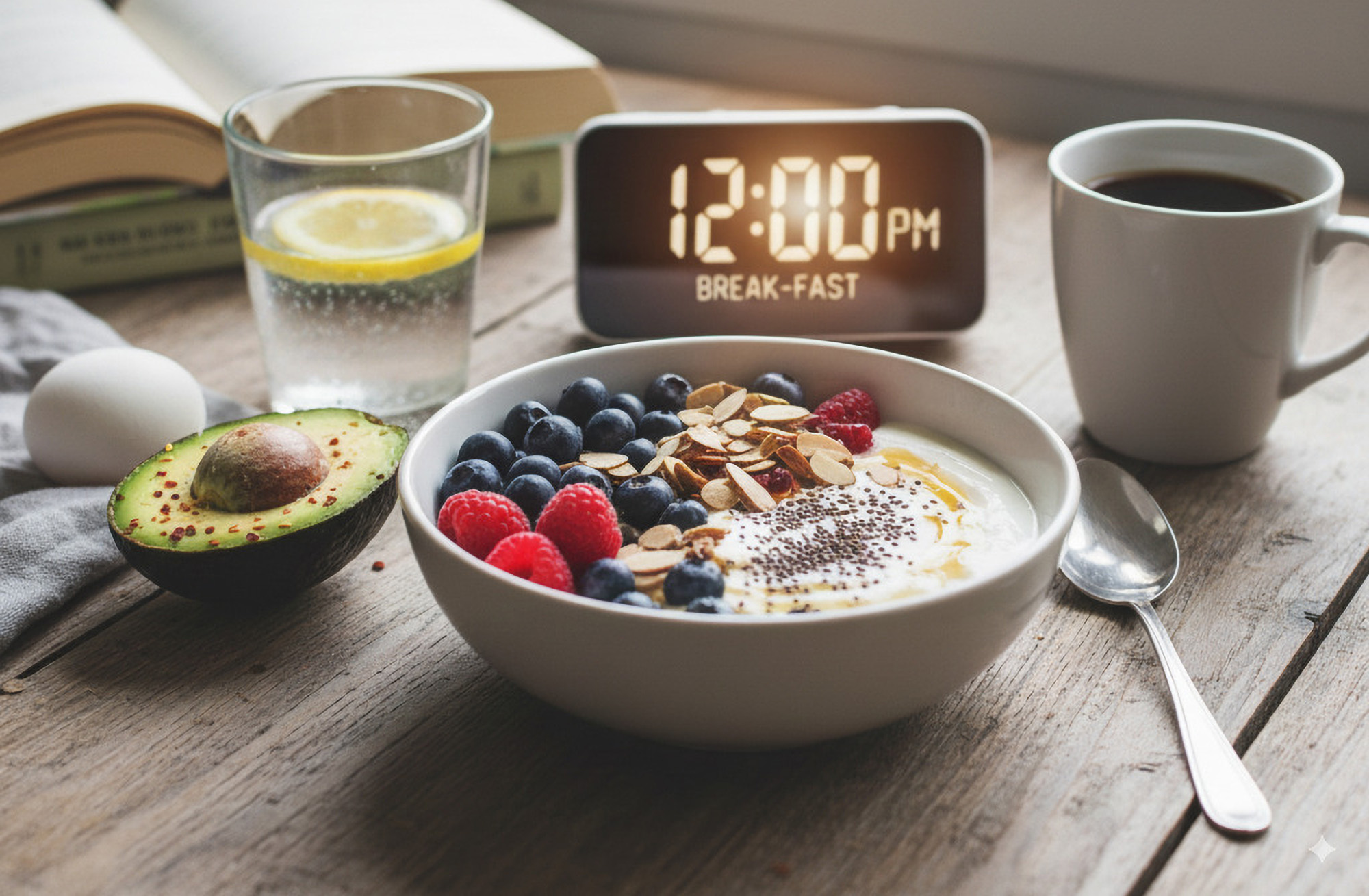What to Eat (and When) to Maximize Fasting Benefits

Let's be honest—fasting is trendy right now. But unlike most health fads, this one actually has solid science behind it. The thing is, most people focus so hard on not eating that they forget how much their food choices matter when they actually do eat.
I've been experimenting with different fasting protocols for about three years now, and I've made pretty much every mistake in the book. Turns out, what you eat around your fasts can make or break the whole experience.
First Things First: Breaking Your Fast Without Breaking Your Gut
Remember that scene in Cast Away where Tom Hanks finally gets rescued and probably dreams of cheeseburgers? Yeah, that's not how you want to approach breaking a fast. Trust me on this one.
Your digestive system basically goes into power-saving mode during a fast. Wake it up too aggressively and you'll regret it. I once broke a 24-hour fast with leftover Thai food. Spicy pad kee mao. At 10 AM. My stomach staged a revolt that lasted hours.
So what actually works? Start small. Really small.
Bone broth is the classic choice, and honestly, it's popular for good reason. But if you're like me and think bone broth tastes like sad soup, try this instead: a handful of macadamia nuts or half an avocado. The fat is gentle on your system and won't spike your insulin like carbs would.
Wait at least 30 minutes—better yet, an hour—before you eat a real meal. I know, I know. You're hungry. But this buffer time lets your digestive enzymes wake up properly. When you do eat that first real meal, make it count. Eggs cooked in butter. Salmon with olive oil. A grass-fed burger (skip the bun). The research on this is pretty clear: protein and fat first, carbs later.
Before You Fast: The Last Supper Strategy
What you eat before a fast matters way more than most people realize. Get it wrong and those first 8-10 hours will feel like torture.
Here's what I've learned works: fat is your friend. No, seriously. While everyone else is loading up on pasta "for energy," you want to be eating foods that'll keep you satisfied for hours. My go-to pre-fast meal? A big salad with olive oil dressing, grilled chicken thighs (not breasts—too lean), and half an avocado. Sometimes I'll add sweet potato if I'm planning a longer fast.
The science backs this up too. Meals higher in fat before fasting lead to better appetite control. It's not rocket science—fat slows down digestion, keeping you fuller longer.
Skip the bread. Skip the cereal. Definitely skip the juice. These foods might give you quick energy, but they'll also give you a quick crash. And when you're fasting, that crash hits different.
The Extended Fast Survival Kit
Okay, so you've decided to go beyond the typical 16:8 intermittent fasting. Maybe you're trying a 36-hour fast. Maybe longer. Here's where things get interesting.
Water isn't enough. I learned this during my first 48-hour fast when I got a headache so bad I thought my skull was splitting. Turns out, when you're not eating, you're not getting electrolytes. And your body dumps a lot of sodium and potassium when you fast.
Get some good salt. Not table salt—the real stuff. Pink Himalayan, Celtic sea salt, whatever. Put a pinch in your water. It tastes gross at first, but it's better than feeling like death. Some people buy fancy electrolyte supplements. They work, but honestly? Salt water is cheaper and just as effective.
Coffee and tea are controversial. Some purists say they break a fast. Most researchers disagree. Black coffee might actually enhance some of the benefits—something about polyphenols and autophagy. I drink coffee during fasts because, well, I like coffee and I'm not giving it up. Sue me.
The MCT oil thing? Look, adding fat to your coffee technically breaks your fast. But if a tablespoon of coconut oil in your morning coffee means you can fast for 24 hours instead of giving up at hour 16, then do it. Perfect is the enemy of good.
When You Can Eat: Make It Count
Here's where people mess up. They fast for 16 hours then eat garbage for 8. That's like going to the gym then smoking a pack of cigarettes.
Your eating window isn't a free-for-all. It's actually when the real work happens. You've got limited time to get all your nutrients in. This isn't the moment for empty calories.
Load up on vegetables. I mean really load up. If your plate isn't at least half covered in plants, you're doing it wrong. And not just lettuce—we're talking broccoli, Brussels sprouts, cauliflower, spinach, bell peppers. The works.
Protein at every meal. This isn't negotiable. Especially if you're working out. Aim for about 30 grams per meal minimum. That's roughly a palm-sized portion of meat or fish, or about 4-5 eggs.
Timing does matter, despite what some people say. Eating your biggest meal at 9 PM then going to bed at 11? Not ideal. Your body has circadian rhythms for a reason. Front-load your calories when you can. Bigger lunch, smaller dinner. It's not always practical, but when you can swing it, you'll sleep better and feel better.
Foods That Actually Help
Some foods seem to make fasting easier and more effective. This isn't bro science—there's actual research here.
Fermented foods are magic. Sauerkraut, kimchi, kefir if you do dairy. Your gut microbiome changes during fasting, and these foods support those changes. Plus, they're usually low calorie and high flavor, which helps when you're trying to eat less overall.
Berries over other fruits. Lower sugar, higher antioxidants. Blueberries especially. Frozen ones are fine—actually, they're often better than fresh since they're picked at peak ripeness.
Fatty fish twice a week minimum. Salmon, mackerel, sardines. Yes, sardines. Get over it. They're cheap, sustainable, and loaded with omega-3s. The anti-inflammatory effects stack with fasting benefits.
Dark chocolate. But we're talking 85% cacao or higher. None of that milk chocolate nonsense. A square or two after dinner can actually help with adherence. Sometimes you need something that feels like a treat.
The Mistakes Everyone Makes (Including Me)
Overeating during your window because "you earned it." No. Just no. Fasting isn't a license to binge. Your stomach shrinks during a fast. Respect that.
Not drinking enough water. Then drinking too much water without electrolytes. It's a balance. Aim for pale yellow pee, not clear. Clear means you're flushing out minerals.
Breaking fasts with wine. I see this all the time. "It's just one glass with dinner." On an empty stomach? That's a fast track to feeling awful. Save the alcohol for after you've had solid food.
Getting too rigid about protocols. Look, some woman on Instagram might swear by OMAD (one meal a day), but if it makes you miserable, it's not for you. I tried OMAD for a month. I was cranky, my workouts sucked, and my wife threatened to force-feed me breakfast. Now I do 16:8 most days, 20:4 occasionally, and longer fasts maybe once a month. Find what works for YOUR life.
Real Talk: Making This Sustainable
Start where you are. Can't imagine skipping breakfast? Start by pushing it back an hour. Then two. Baby steps beat grand gestures every time.
Track how you feel, not just what you eat. Energy levels, mood, sleep quality. These matter more than perfect adherence to some protocol you found online.
Be flexible. Traveling? Social events? Birthday dinner? It's okay to adjust. The best fasting schedule is the one you can stick to 80% of the time, not the one you follow perfectly for two weeks then abandon.
And here's the thing nobody talks about: fasting isn't magic. It's a tool. A good tool, backed by solid research, but still just a tool. Combine it with smart food choices, decent sleep, some exercise, and stress management, and yeah—you'll probably see benefits. Try to use it to compensate for a trash lifestyle? Good luck with that.
The bottom line? Pay attention to what you eat around your fasts. It matters more than you think. But don't get so caught up in optimization that you forget to live your life. Sometimes the best choice is the imperfect one you'll actually stick with.
